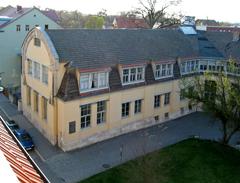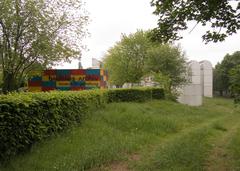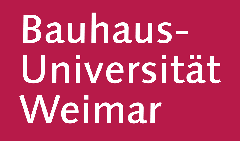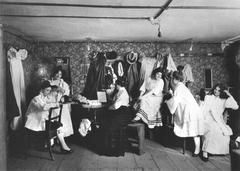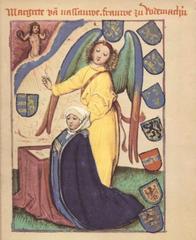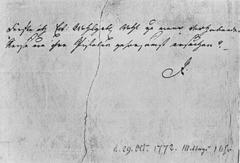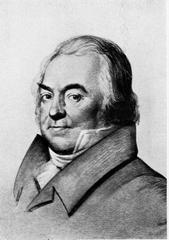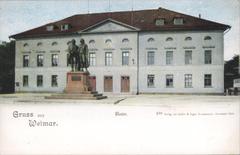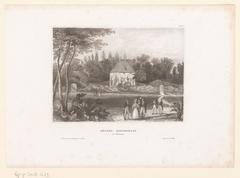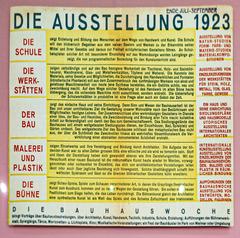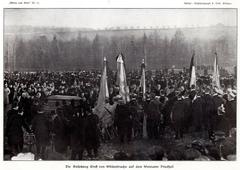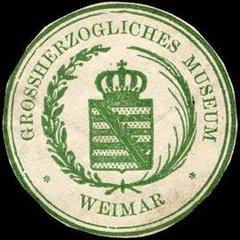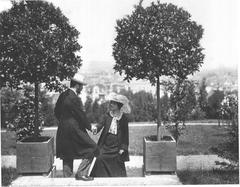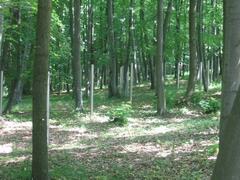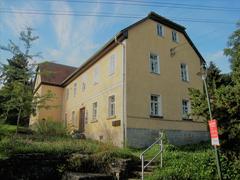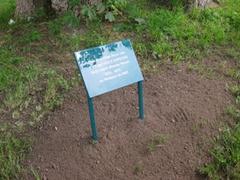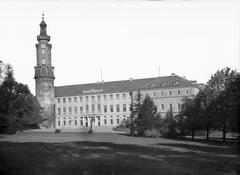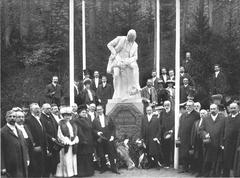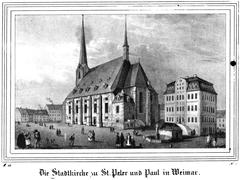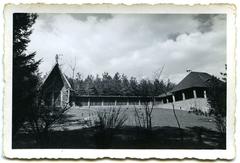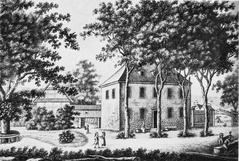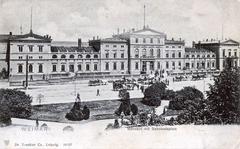
Jakobskirche Weimar: Visiting Hours, Tickets, and Comprehensive Travel Guide
Date: 04/07/2025
Introduction
Jakobskirche, or St. James’ Church, is one of Weimar’s most cherished landmarks, embodying centuries of spiritual, cultural, and architectural heritage. From its medieval foundations as a pilgrimage site to its Baroque transformation and its connections to luminaries such as Goethe and Lucas Cranach the Elder, Jakobskirche stands as a testament to Weimar’s dynamic history. This guide offers all the essential information for visitors, including up-to-date visiting hours, ticket policies, accessibility, special events, and travel tips, as well as detailed insights into the church’s historical, religious, and cultural significance.
For the latest updates and official details, refer to the Weimar tourism website, Wikipedia: Weimar, and dedicated cultural blogs like weimar-erkunden.de.
Table of Contents
- Introduction
- Historical Overview
- Architectural and Artistic Highlights
- Visiting Jakobskirche: Hours, Tickets, and Accessibility
- Guided Tours and Special Events
- Location, Nearby Attractions, and Travel Tips
- Visuals and Media
- Frequently Asked Questions (FAQ)
- Conclusion and Recommendations
- References
Historical Overview
Medieval Foundations and Pilgrimage Heritage
Jakobskirche’s origins date to the 12th and 13th centuries, serving initially as a modest Romanesque chapel dedicated to St. James the Elder. Though Weimar was not on the main route to Santiago de Compostela, the church was an important spiritual waypoint for local and regional pilgrims, a role symbolized by the recurring motif of the scallop shell in its iconography (klassenfahrt.eu).
Reformation, Baroque Transformation, and Enlightenment Era
During the 16th-century Reformation, Jakobskirche transitioned from Catholic to Protestant worship, aligning with the broader Lutheran movement in Thuringia. In 1712–13, the church was rebuilt in the Baroque style, featuring a single-nave design, a distinctive square tower crowned with an onion dome, and a bright, spacious interior. These changes reflected Weimar’s emergence as a center of culture and thought under the Dukes of Saxe-Weimar.
Jakobskirche has served as a parish church, a court church following the 1774 Stadtschloss fire, and even a military hospital during the Napoleonic Wars. Restoration under architect Clemens Wenzeslaus Coudray in the early 19th century preserved its Baroque integrity while adding Neoclassical elements (weimar-tourist.de).
Role in the Peaceful Revolution
In the late 20th century, Jakobskirche became a gathering place for civic engagement and peaceful protest during the decline of East Germany’s GDR, echoing the broader role of Protestant churches in the 1989 Peaceful Revolution (klassenfahrt.eu).
Architectural and Artistic Highlights
Exterior and Tower
Jakobskirche’s Baroque façade is characterized by clean lines, understated elegance, and a distinctive onion-domed tower. The church sits next to Jakobsfriedhof, a tranquil cemetery enclosed by ancient walls (weimar-erkunden.de). Visitors can ascend the tower (for a small donation, ~2 euros) for panoramic views of Weimar’s skyline and explore a historic turret apartment once occupied by the church’s tower keeper (wildeast.blog).
Interior Features
The interior blends Baroque warmth and Neoclassical refinement, featuring a single nave, elegant galleries, and a Neoclassical altar with a 17th-century statue of Christ. Colorful stained-glass windows cast vibrant light across the nave. The 1908 organ, known for its rich sound, supports both services and frequent concerts (weimar-erkunden.de).
Artistic and Memorial Significance
Jakobskirche and its churchyard are the final resting places of notable figures: Lucas Cranach the Elder (Renaissance artist), Christiane Vulpius (Goethe’s wife), and English painter Charles Gore. These graves underscore the church’s close ties to Weimar’s artistic and literary legacy (outdooractive.com).
Visiting Jakobskirche: Hours, Tickets, and Accessibility
-
April to October:
- Monday–Saturday: 10:00–16:00
- Sunday: 11:00–16:00
-
November to March:
- Daily: 11:00–15:00
- Note: Hours may vary during special events, services, or holidays. Always check the official Weimar tourism website or posted notices for updates.
-
Admission:
- Entry to the church and cemetery is free.
- Access to the tower requires a small donation (approx. 2 euros).
-
Accessibility:
- The main entrance and nave are wheelchair accessible.
- Tower access is via narrow stairs and not suitable for visitors with mobility impairments.
Guided Tours and Special Events
-
Guided Tours:
- Available seasonally, often via the Weimar Tourist Information Center or local guides.
- Tours provide in-depth insights into the church’s history, architecture, and cultural context.
- English-language tours can be arranged in advance; self-guided visits are supported by bilingual information panels.
-
Special Events:
- Jakobskirche regularly hosts concerts, art exhibitions, lectures, and community events.
- Event schedules are posted at the church, on the official tourism site, and through local cultural calendars.
Location, Nearby Attractions, and Travel Tips
-
Location:
- Situated at Rollplatz, just outside Weimar’s historic center.
- A 10–15 minute walk from the city center; accessible by public transit, bike, or car.
-
Nearby Attractions:
- Goethe National Museum
- Bauhaus Museum
- Duchess Anna Amalia Library
- Herderkirche
- Jakobsfriedhof (adjacent cemetery)
-
Travel Tips:
- Arrive early to avoid crowds and enjoy the peaceful setting.
- Wear comfortable shoes for cobblestone streets and uneven cemetery paths.
- Facilities like cafés and restrooms are nearby; Lieblingsgarten café in Kirms-Krackow Garden is recommended.
- Basic German greetings (“Guten Tag”) are appreciated, though English is widely understood.
- Maintain quiet and respectful behavior, especially during services and around graves.
Visuals and Media
- Photography:
- Permitted inside the church and in the cemetery; avoid flash and be mindful during services.
- Virtual Resources:
- High-quality images, virtual tours, and interactive maps are available on the official tourism website and partner sites (ausflugsziele-weimar.de).
- Image Suggestions:
- “Jakobskirche Weimar exterior with tower”
- “Stained glass windows inside Jakobskirche”
- “Historic gravestones in Jakobskirche churchyard”
Frequently Asked Questions (FAQ)
What are Jakobskirche’s visiting hours?
April–October: Mon–Sat 10:00–16:00, Sun 11:00–16:00; November–March: daily 11:00–15:00. Check for seasonal or event-based changes.
Is there an admission fee?
No; entry is free. Donations are appreciated, and a small donation is requested for tower access.
Are guided tours available in English?
They are offered seasonally or by arrangement; self-guided visits are supported by English materials.
Is the church wheelchair accessible?
The nave and main entrance are accessible. The tower is not due to stairs.
Can I attend concerts or special events?
Yes; check local listings and notice boards for schedules.
Can I take photos inside the church?
Yes, but do so respectfully and without flash.
Conclusion and Recommendations
Jakobskirche is a profound cultural, spiritual, and architectural destination at the heart of Weimar. From its medieval origins and Baroque splendor to its ties to Goethe and role in civic movements, the church offers visitors an enriching and reflective experience. Its accessible policies, free entry, and proximity to other major attractions make it ideal for all travelers.
Recommendations:
- Plan your visit using official sources for the latest information.
- Explore nearby sites for a full Weimar cultural itinerary.
- Download the Audiala app for guided tours and updates.
- Attend a concert or special event for a unique perspective.
- Share your experiences to inspire other travelers.
References
- Weimar tourism website
- Jakobskirche Weimar: Klassenfahrt.eu
- Weimar-Erkunden.de
- Ausflugsziele-Weimar.de
- Weimar Wikipedia
- PlanetWare: Weimar Sights
- Weimar Tourist Guide
- Outdooractive.com
- Wildeast.blog
For up-to-date visiting hours, tickets, and event info, visit the official Weimar tourism website and Jakobskirche’s dedicated page.

